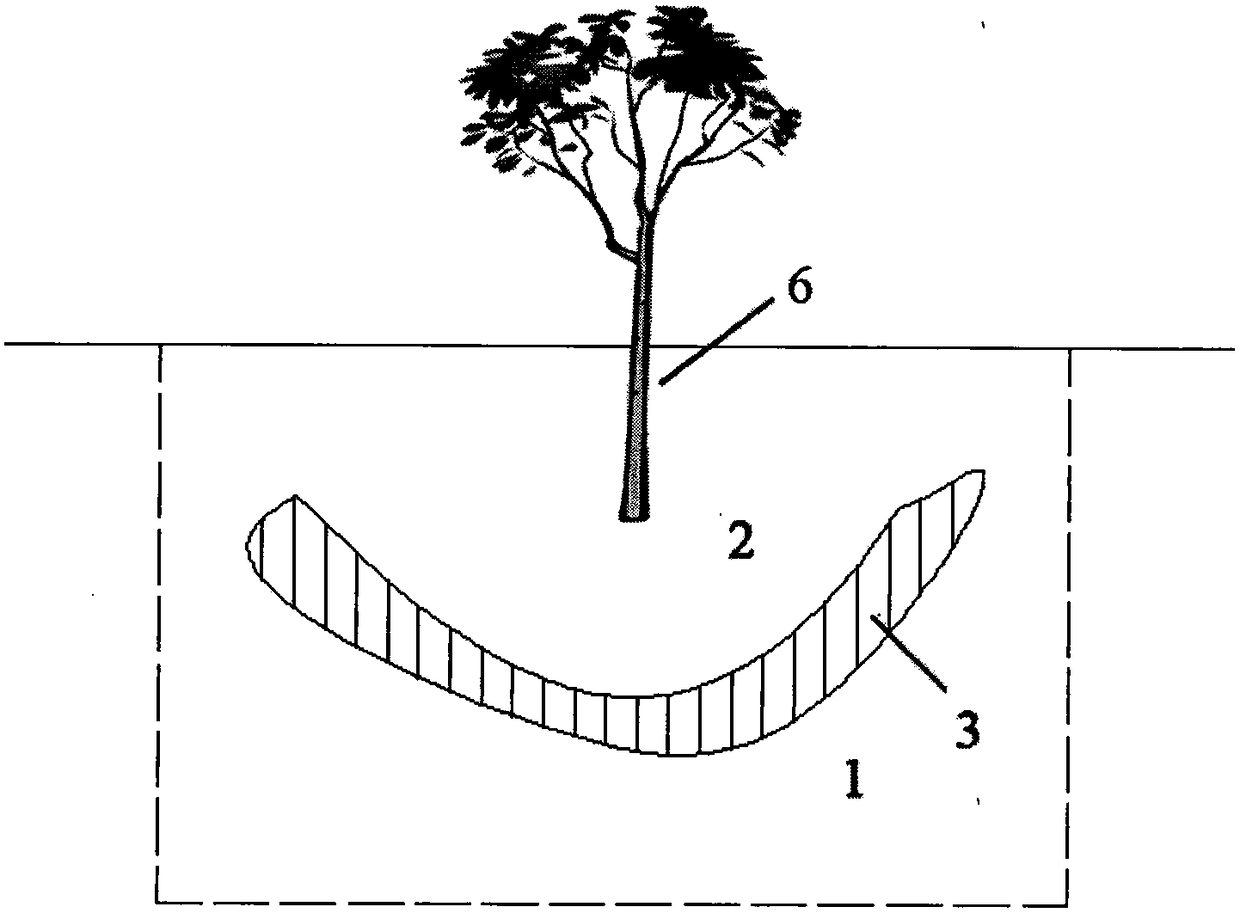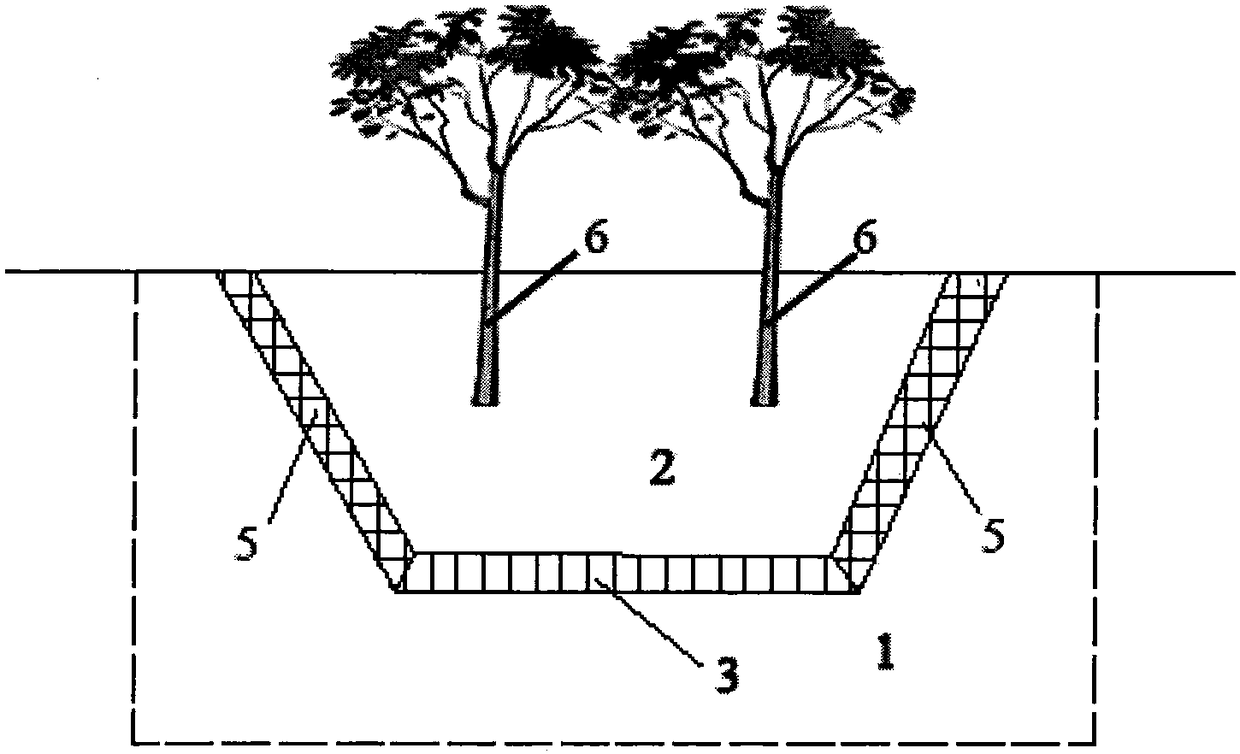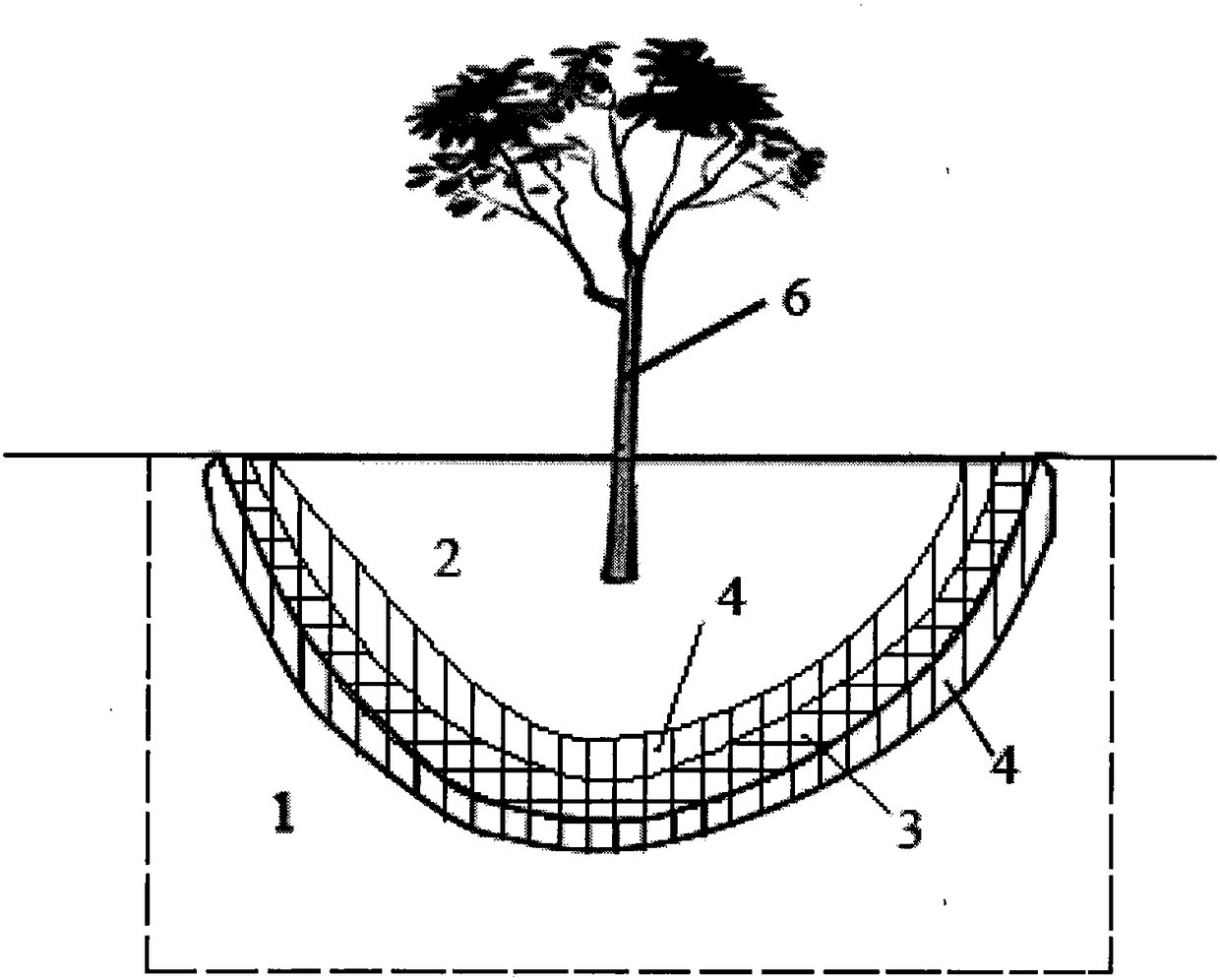Planting structure and method in desert, sandy land and saline-alkali land
A technology of planting structure and planting method, applied in botany equipment and methods, infrastructure engineering, plant cultivation, etc., can solve problems such as poor water retention, not suitable for the survival and growth of crops or ecological forests, and no planting effect, etc., to achieve Low cost, high water retention and anti-seepage function, excellent water retention and anti-seepage effect
- Summary
- Abstract
- Description
- Claims
- Application Information
AI Technical Summary
Problems solved by technology
Method used
Image
Examples
Embodiment 1
[0039] Excavate the surface desert sand in plot A1 to form a square flat bottom, surrounded by 25° slopes, and a large pit with a depth of 70 cm, and then spread the commercially available hydrophobic nano-calcium carbonate with a particle size of 80nm on the flat bottom of the inner pit And on the surface of the surrounding slopes, a hydrophobic nano-calcium carbonate layer with a thickness of 12 cm is formed. After compaction, desert sand is spread to form a planting soil layer, and then the sand tent seeds are sown, and they grow naturally until they are harvested.
Embodiment 2
[0049] Dig out the 15 cm thick surface desert sand in the A2 plot, and then dig out circular arc-shaped pits with a depth of 30 cm one by one, and spread the commercially available hydrophobic nano-calcium carbonate with a particle size of 30nm on the pits. On the inner surface of the pit and on the edge of the pit, a layer of hydrophobic nano-calcium carbonate layer with a thickness of 10 cm is formed on the inner surface of the pit and on the edge of the pit, and then desert sand is filled in the pit to form a planting soil layer, and a sand tree is planted in each pit. Jujube seedlings, and finally, spread 15 cm thick desert sand on the surface. Subsequently, the seedlings of Eleuthero jujuba grow and develop naturally.
Embodiment 3
[0059] Excavate the desert sand on the surface of the A3 plot to form a square flat bottom, surrounded by 25° slopes, and a large pit with a depth of 65 cm, and then spread a layer of 200g / m 2 The breathable and water-permeable polypropylene geotextile, and then spread a layer of hydrophobic nano-calcium carbonate layer with a particle size of 15 cm and a particle size of 70 nm on the polypropylene geotextile, and then spread a layer of hydrophobic nano-calcium carbonate layer with a specification of 300g / m 2 The breathable and water-permeable polypropylene geotextile is used, and then a layer of 20 cm clay-sand soil layer is laid on the polypropylene geotextile. After filling with water, a paddy field with a surface water depth of 10 cm is formed, and then rice is planted. The rice output reaches 473 kg / mu.
PUM
 Login to View More
Login to View More Abstract
Description
Claims
Application Information
 Login to View More
Login to View More - R&D
- Intellectual Property
- Life Sciences
- Materials
- Tech Scout
- Unparalleled Data Quality
- Higher Quality Content
- 60% Fewer Hallucinations
Browse by: Latest US Patents, China's latest patents, Technical Efficacy Thesaurus, Application Domain, Technology Topic, Popular Technical Reports.
© 2025 PatSnap. All rights reserved.Legal|Privacy policy|Modern Slavery Act Transparency Statement|Sitemap|About US| Contact US: help@patsnap.com



